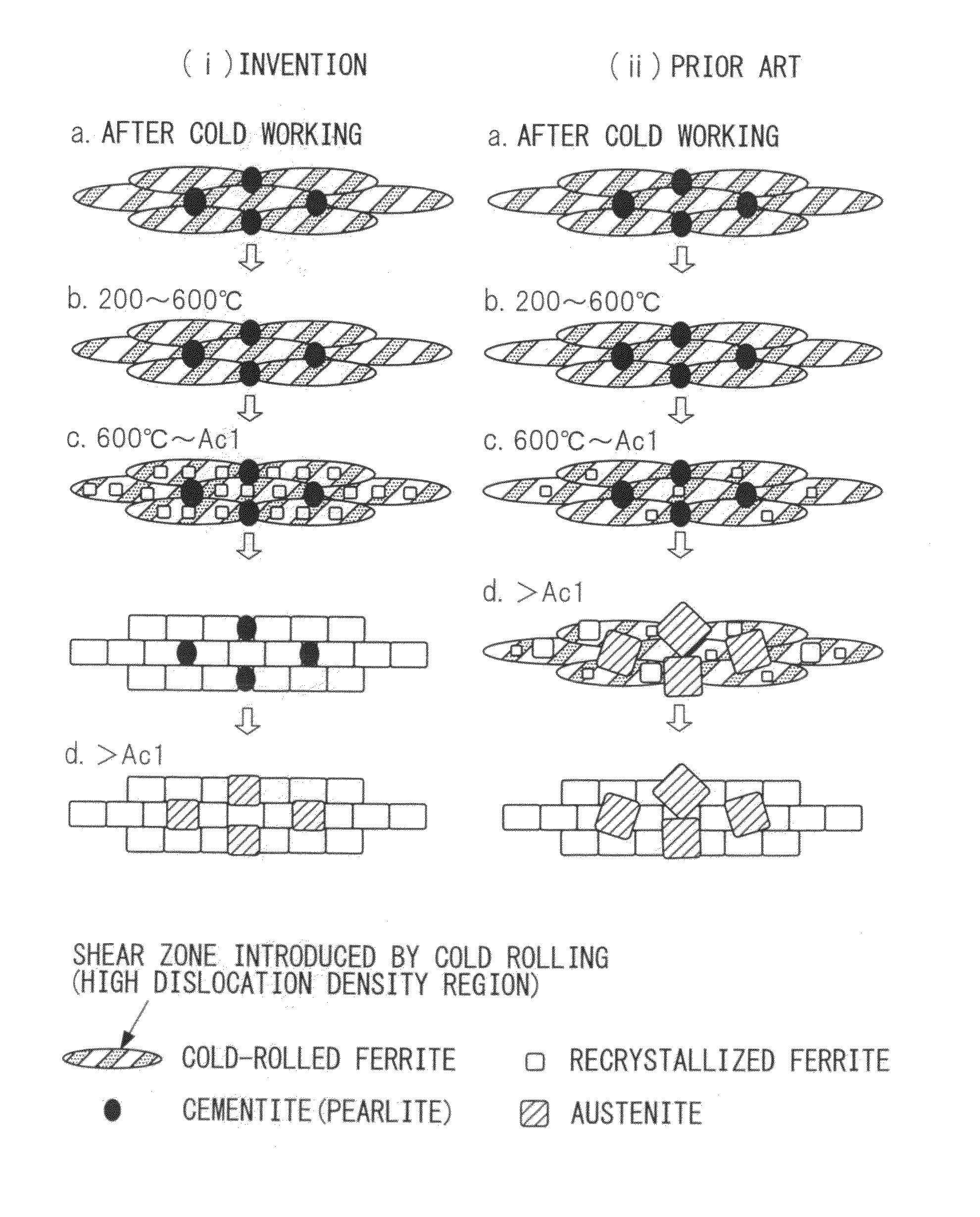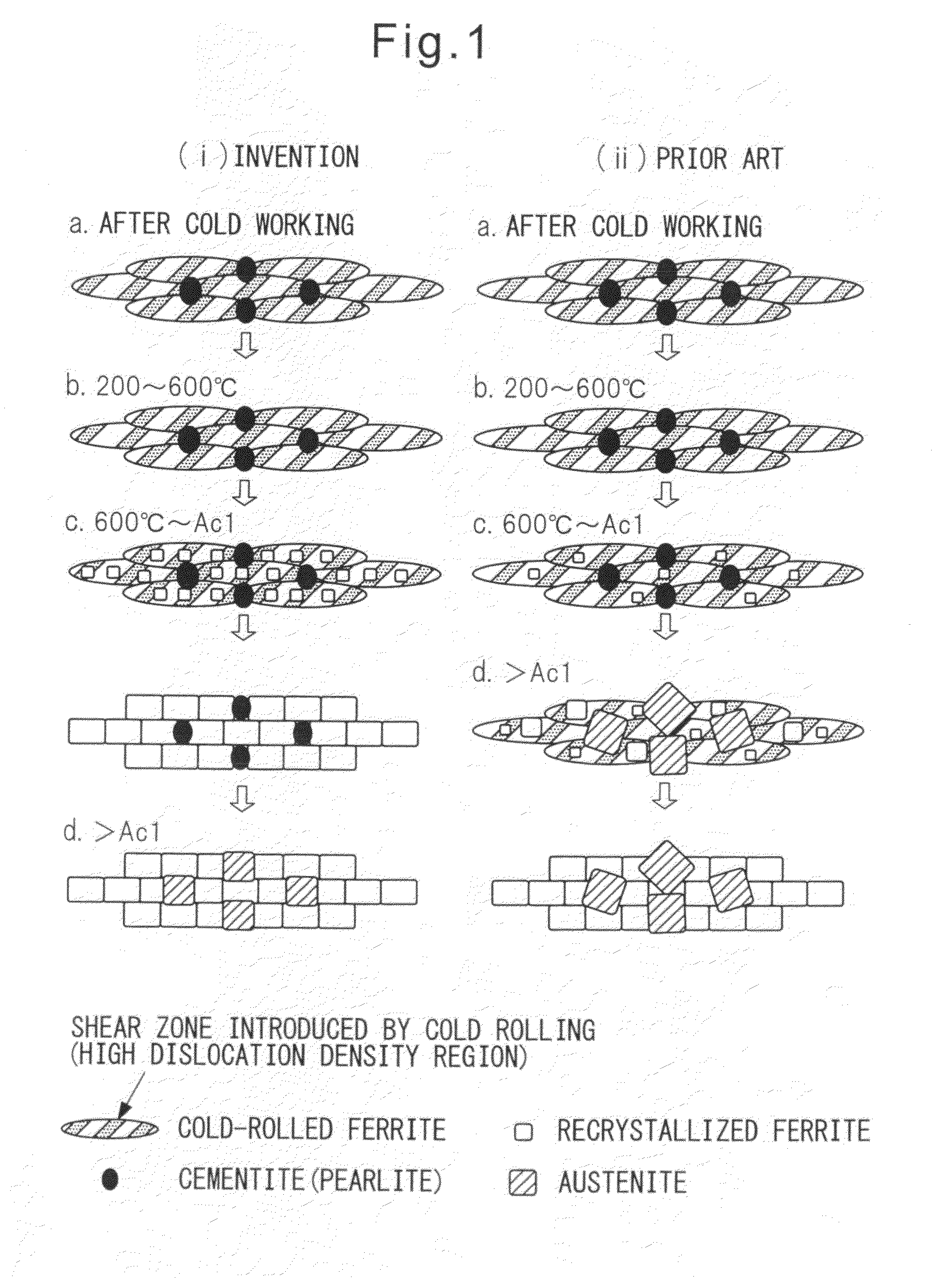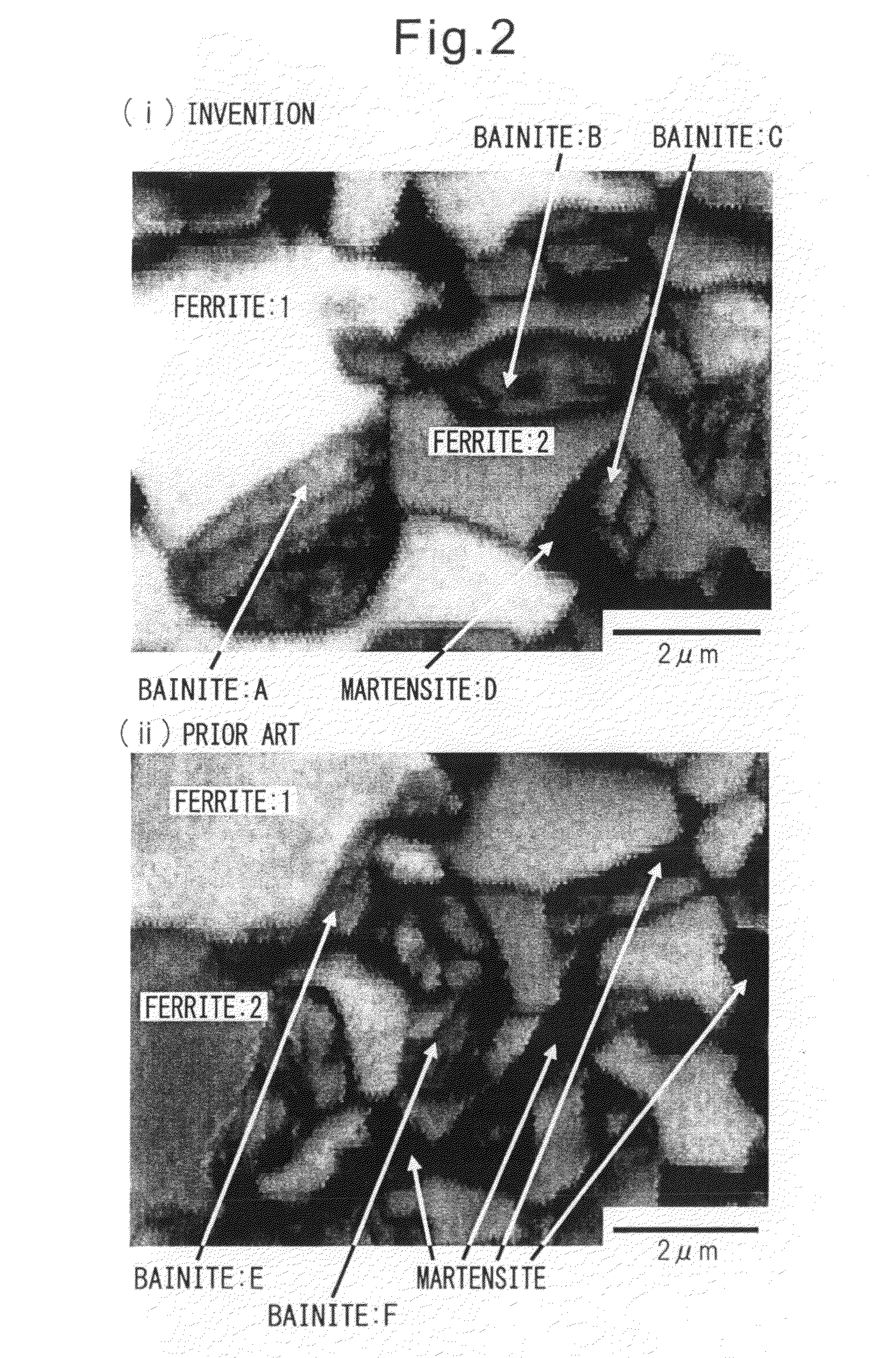High-strength steel sheet and galvanized steel sheet having very good balance between hole expansibility and ductility, and also excellent in fatigue resistance, and methods of producing the steel sheets
a high-strength steel and galvanized steel technology, applied in the field of steel sheets, can solve the problems of crack formation and breakage, marked degradation of hole expansibility, and decline in the formability of steel, and achieve excellent fatigue resistance, excellent ductility, and excellent hole expansibility
- Summary
- Abstract
- Description
- Claims
- Application Information
AI Technical Summary
Benefits of technology
Problems solved by technology
Method used
Image
Examples
examples
[0174]Examples of the present invention are explained in detail in the following.
[0175]Slabs having the compositions shown in Table 1 were each heated to 1,200° C., hot rolled at a finish hot-rolling temperature of 900° C., water cooled in a water-cooling zone, and then coiled at the temperature shown in Table 2 or 3. The hot-rolled sheet was pickled, whereafter the 3-mm thick hot-rolled sheet was cold-rolled to 1.2 mm to obtain a cold-rolled sheet.
[0176]Each of the cold-rolled sheets was anneal heat treated under the conditions shown in Table 2 or 3, and annealed using an annealing line. The furnace atmosphere was established by attaching an apparatus for introducing H2O and CO2 generated by burning a mixed gas of CO and H2, and introducing N2 gas containing 10 vol % of H2 and controlled to have a dew point of minus 40° C. Annealing was conducted under the conditions shown in Table 2 or 3.
[0177]The galvanized steel sheets were annealed and galvanizes using a continuous hot-dip galv...
PUM
| Property | Measurement | Unit |
|---|---|---|
| tensile strength | aaaaa | aaaaa |
| temperature | aaaaa | aaaaa |
| temperature | aaaaa | aaaaa |
Abstract
Description
Claims
Application Information
 Login to View More
Login to View More - R&D
- Intellectual Property
- Life Sciences
- Materials
- Tech Scout
- Unparalleled Data Quality
- Higher Quality Content
- 60% Fewer Hallucinations
Browse by: Latest US Patents, China's latest patents, Technical Efficacy Thesaurus, Application Domain, Technology Topic, Popular Technical Reports.
© 2025 PatSnap. All rights reserved.Legal|Privacy policy|Modern Slavery Act Transparency Statement|Sitemap|About US| Contact US: help@patsnap.com



